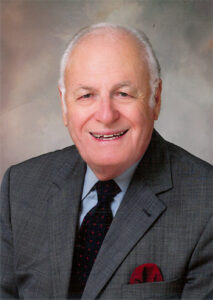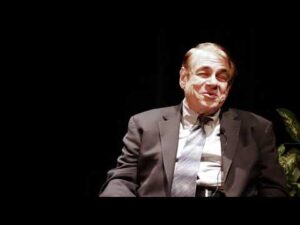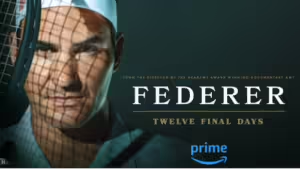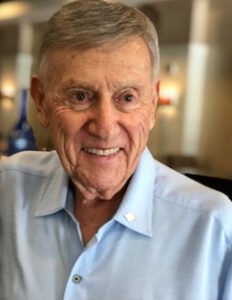
My wife and a dedicated team of bakers, icers and friends made these. They are delicious.
“The file labeled me isn’t finished.”
I saw that sentence somewhere recently and I wrote it down a few hours later because I couldn’t let go of the thought.
I don’t remember where I saw those words, but they spoke to me like the best sentences do.
I just turned 60. Today.
It’s a number. Quite a number. There’s more road behind me than ahead, but still it’s just a number.
It feels like you blink and decades of your life flies by.
Childhood, high school, college, first job, marriage, kids, career—love and loss. Laughter and tears.
Plenty of laughter, plenty of tears.
I think many of us live on three planes—the past, the present and the future.
We reflect and we remember. We take the day to day as it comes. We meet our deadlines and we strive to honor our commitments. We decide what to leave in and we decide what to leave out. We try and think ahead. We invest our hopes in a better tomorrow.
That hopeful mindset is how I navigate the world. I look back fondly and often, I try to be present and I dream about tomorrow.
But when you hit 60, there’s a shift. Tomorrow— which is never guaranteed — is here.
Earlier this year, my friend Randy sent me a chart with rows of chairs -10 across- representing each decade of life.
There are 8 rows that most of us feel we can be around to experience, the 9th row is in red, because making it beyond 90 is tough.
That chart has both haunted and focused me ever since he sent it.
I just entered the 6th row. There are only a few rows left —if I’m lucky. Moreover, within those rows is the logical conclusion that the age I am now will be better than the years ahead. I’ve been told by older friends that aging isn’t for sissies. I believe it.
But there’s something liberating about this stage of life.
I find myself happy with where I’ve been and where I’m at. I take joy in those I love. I’m surrounded by friends, have meaningful work and feel pretty good.
I’ve decided to let some things go, try a few new things and spend as much time enjoying the goodness in this world. And there plenty of goodness in this world.
Give me family, friends, pets, music, a good book and good conversation. I don’t need things but I want and crave experiences. And I want to make time for what’s important. As my friend Scott Porten says..we’ve got things to do.
For me, that’s time with my wife and best friends, visits with my children, travel to a few places, time in Maine, writing and learning all I can because this world fascinates me.
I’m also going to remain involved in the world via the Carl Angus DeSantis Foundation, which is the most inportant work I’ve done in my life. To find this kind of work as a career capper has been a blessing. Philanthropy has reawakened my passion for trying to make my corner of the world a better place. That I get to do this work with a wonderful teammate, a supportive board and in the name of a man who changed my life is an honor and a blessing. Carl DeSantis was so good to me and to so many others. I miss him beyond words.
I’m at an age where I’m sometimes asked for advice. And truth be told, I’m flattered and I always want to help but I’ve lived such an unconventional life that I feel I can’t offer a recipe, only a template.
Say yes to things that scare you.
Try new things, it’s ok to fail as long as you learn.
Surround yourself with people who lift you up, fulfill you and inspire you.
Try and see others and encourage them. Dare to love passionately. You will suffer more than a few broken hearts but you will survive and love again.
Everything I just wrote is a cliche. But it’s all true.
When I left college I got a newspaper job, I barely knew what I was doing and I was intimidated by the veterans that commanded the newsroom.
Newspaper reporters are great characters, and this group seemed so competent and confident. They were grizzled, and I was young, naive and far from confident. But I faked it until I made it. I listened, I learned, I threw myself into the job and studied the greats sitting near me and working in other newsrooms and in time I got better.
When I went into business for myself, I was terrified. But I figured it out —in time.
When I went into politics, I was way, way over my skies but I joined a team that nurtured me and made me look like I knew what I was doing–at least some of the time.
Post politics I helped start a magazine, briefly owned part of a newspaper (a longtime dream), worked with a dear friend in public relations, did a lot of consulting work and freelance writing and then ran into a legendary entrepreneur who changed my life and asked me to help him with a little beverage company he believed in by the name of Celsius.
I wrote two books, a play, this blog, stayed with Carl’s family office and went into real estate and a slew of other businesses ranging from a hot sauce to whatever else caught my friends eye. What a ride!
And I was unprepared for all of it. I made all sorts of mistakes and invented a few along the way. But each day I woke up and vowed to do better.
Now we are diving into philanthropy in a big way, because big is what Carl was about. He roared like a lion- literally. But he was humble too.
I tell my partner at the foundation that we are building the plane while flying it. We don’t know what we don’t know.
But isn’t that wonderful ? Isn’t that life?
I’ve been blessed.
And if it all ends tomorrow I’ve lived a good life.
Hopefully it won’t end quite yet and while I have great faith that there is something beyond this, I guess we really don’t know. But that’s one area I do have confidence in, I’ve found living proof. I’ve seen things, glimpses of something beyond. I know there’s meaning to this life. I’m keeping the faith.
The file is not closed on any of us if we learning from the past, believe in the present and focus on the future.
Thanks for reading and allowing me to share my life with you.








